Bugs are basically pests that dwell in the soil. They may cause good or harm to the plants. On the other hand, potting soil is any plant medium used to grow plants in containers and may contain dirt.
When you water plants, you’ll be able to see bugs coming out of the soil surface.

Table of Contents
Why Potting Soil Might Have Bugs.
The presence of bugs in potting mix, whether beneficial or detrimental, is due to contaminated potting mix or unclean farm tools and equipment. They can easily harbor bug larvae and eggs.
Always sterilize your potting mix before use. In addition to that, always remember to thoroughly disinfect your farm tools too.
Wash the tools with clean bleach and rinse them in clean water. Remember to thoroughly wash and disinfect your protective wear too.
How to Get Rid of Bugs in Potting Soil
There are several ways used to get of soil bugs from potting soils. This may not necessarily need repotting or uprooting the plants. To achieve this, it is advisable to use chemical-free methods.
Organic methods are the most ideal. Chemical methods are hazardous because they may leave chemical residues on the plants which may scorch the plants.
Step 1
Use a mixture of water and hydrogen peroxide in the ratio of 3:1 to thoroughly water these plants.
Hydrogen peroxide releases oxygen into the soil and also kills bugs. The released oxygen is then utilized by plants to grow.
Step 2
Sprinkle diatomaceous earth onto the uppermost soil surface and in the pot. Diatomaceous earth is finely ground fossilized algae and can lacerate the outer shells of bugs.
After watering the plants heavily with hydrogen peroxide, bugs will escape to the top or bottom of the container and will crawl over the diatomaceous earth. This will cause them to lose moisture and eventually dehydrate.
Step 3
Allow the soil to completely dry out and place it in an area with good ventilation. These conditions will make the soil unsuitable for bugs to dwell in.
Finally, add water immediately the leaves start drooping.
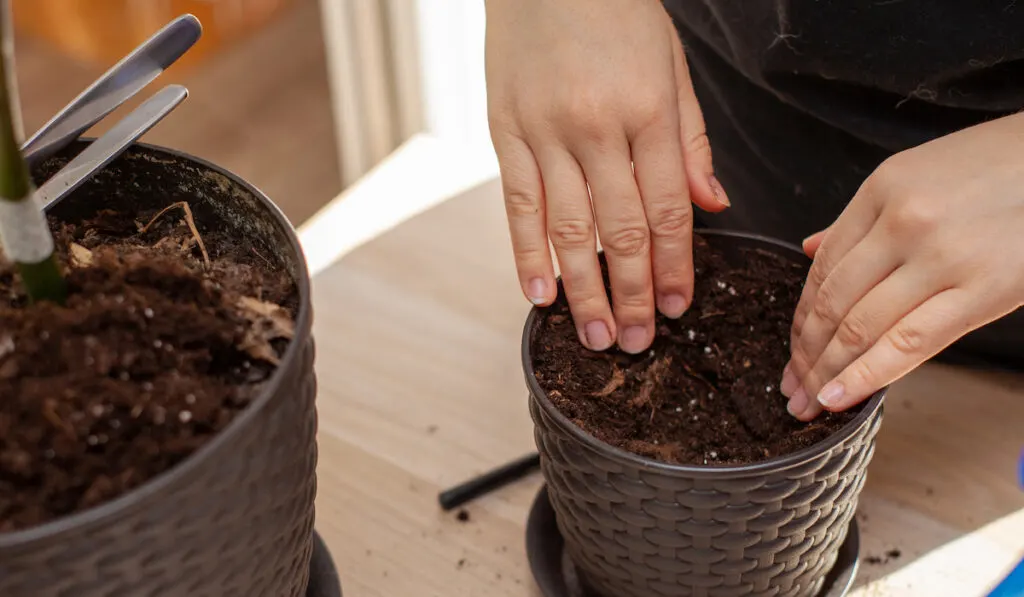
Can You Use Potting Soil Outside If It Has Bugs in It?
The choice of media to use for planting depends on the location of your garden. For indoor plants, it is recommended to use potting mix while for outdoor plants, the best media is soil.
Of course, you could use potting mix outdoors. It is often used for outdoor pots, hanging baskets and even as an amendment to soil.
Indoors or outdoors, if your potting soil has bugs in it you must identify the types of bugs before making the decision whether or not it is necessary to sterilize the media before use.
We typically use potting mix for indoor plants because it is lightweight.
Soil is heavy as compared to potting mix. Using soil indoors will add unnecessary weight to your pots.
To add to that, certain types of soil can be harmful to plants. It is heavy and compact and typically retains excess water.
Accumulation of water is hazardous to plant roots. Aeration is a key factor to be considered. If your plants have too much water, there may be bacteria build-up that slowly kills the plants.
Potting mix, in most cases, is always treated and ready to use whereas soil will need thorough sterilization.
5 Types of Bugs That Might Be in Potting Soil
Any of a variety of bugs could be in your potting soil. Typically you will be able to see them and identify them easily. Here are some of the five most common bugs found in potting soil.
Fungus gnats
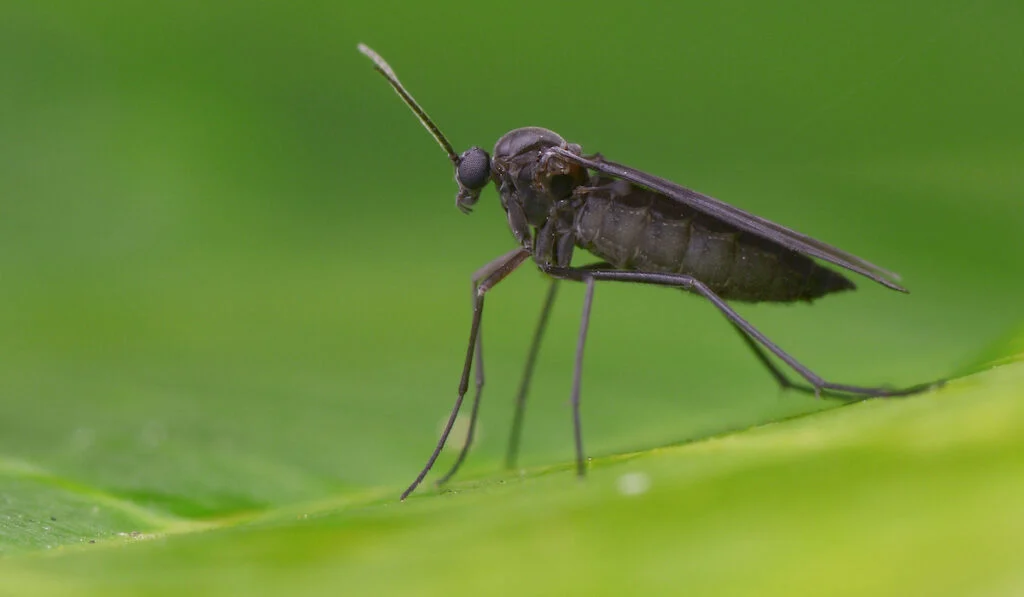
They are popularly known as mushroom flies. They always feed on root hairs that are very vital in mineral uptake by the plants.
Fungus gnats cause viruses, bacteria, and other soil-related diseases thus eventually destroy the plants. Close monitoring must be done.
Spider mites
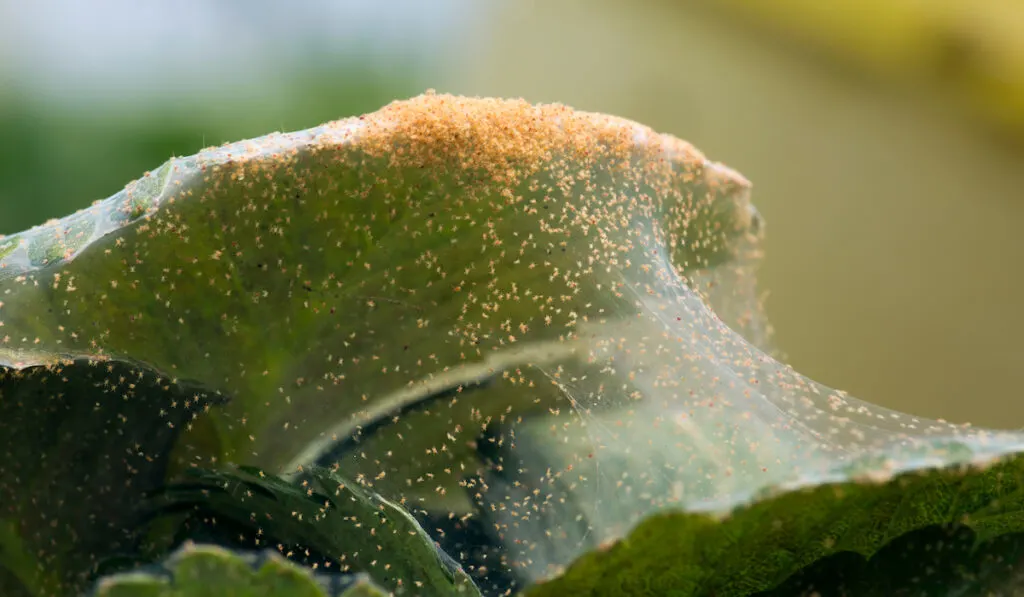
Due to their tiny nature, it is hard to see spider mites with your bare eyes hence you need magnifying lens. They deposit a silk-like web on the plants and can cover the whole plant. This destroys the plant especially the leafy parts.
White flies
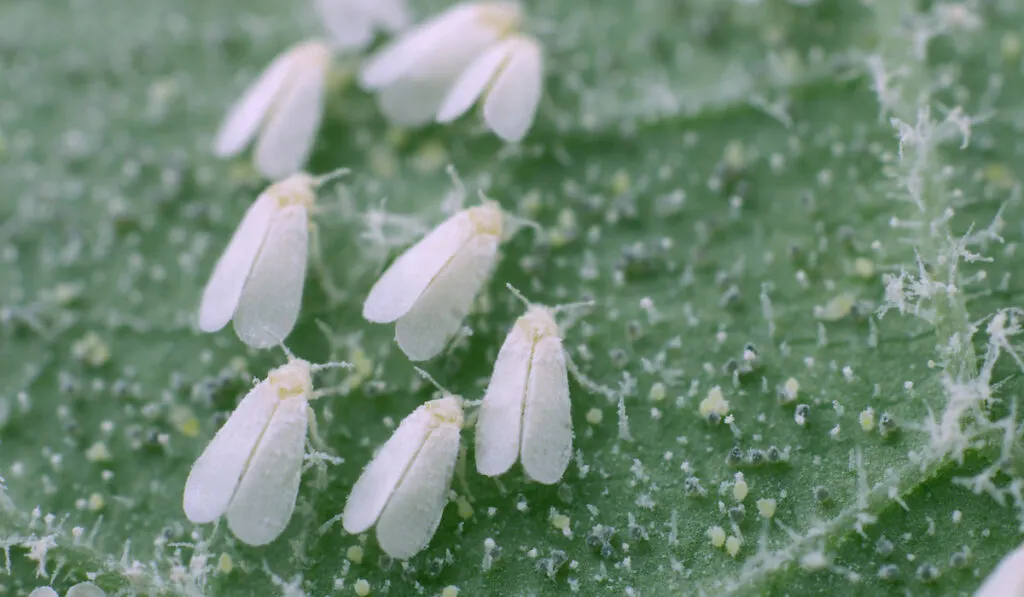
They are mostly found on the lower side of the leaves. They suck plant sap from the leaves and stems. This causes wilting and stunted growth to the plants. The plant will start exhibiting yellow foliage which is as a result of white fly attack. .
Aphids

They are found on the lower side of the leaves. Their mouth parts have a needle-like shape that enables to easily suck sap from leaves. This causes stunted growth and plant deformation.
Scale
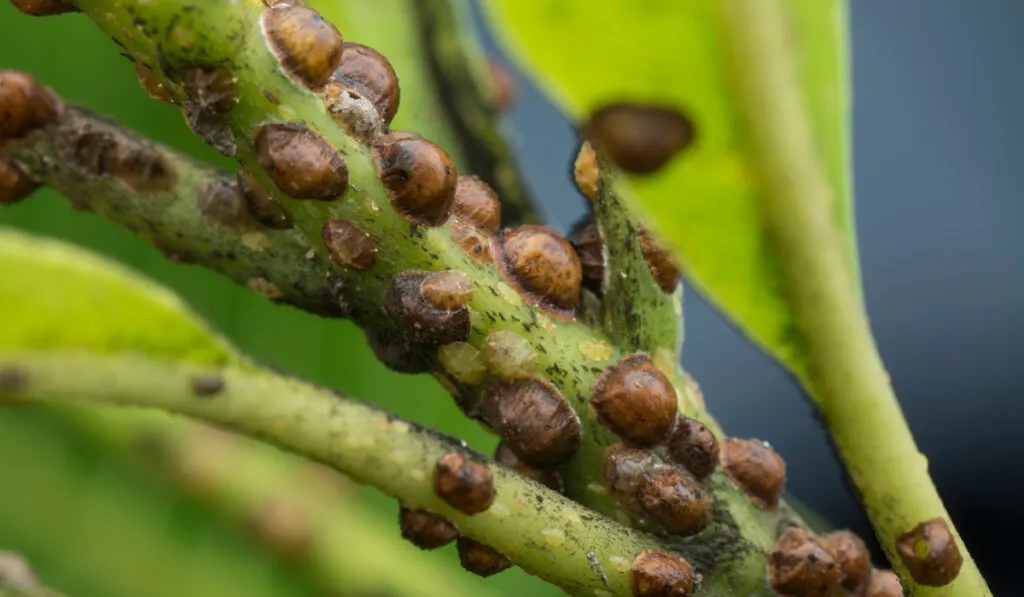
Found along the stem and on the lower sides of the leaves. Scale insects do have a hard, shell-like covering that makes them hard to spot. They deposit honeydew and shiny glazes on leaves.
Can You Bake Potting Soil to Get Rid of Bugs?
There are many methods of sterilizing potting soil. They include steaming and heating the soil in the oven and/or microwave.
Sterilizing Soil with Steam
Steaming is considered one of the best ways to sterilize potting soil and should be done for at least 30 minutes or until the temperature reaches 180°F (82℃).
Steaming can be done with or without a pressure cooker.
If you’re using a pressure cooker, pour several cups of water into the cooker and place shallow pans of level soil on top of the rack. Use foil to cover the pans.
Close the lid but leave the steam valve open to allow the steam to escape, at which time it can be closed and heated for 15 to 30 minutes.
Sterilizing Soil with an Oven
For the oven, put some soil in an oven-safe container covered with foil. Place a meat or candy thermometer into the center and bake at 180°F – 200°F (82-93℃) for at least 30 minutes, or when soil temp reaches 180°F.
Temperatures above that will be toxic. Remove the soil from the oven and allow to cool, leaving the foil in place until ready to use.
Sterilizing Soil with a Microwave
Another way to sterilize soil is to use the microwave. For the microwave, fill clean microwave-safe containers with damp soil. Add some ventilation holes in the lid.
Heat the soil for about 90 seconds per every couple pounds on full power. Allow these to cool, placing tape over the vent holes, and leave until ready to use.
Conclusion
Before using any potting soil to grow plants, ensure that it is free from any pests that could harbor the desired plant growth. Uphold high levels of cleanliness, sterilization, or disinfection to avoid both contamination and recontamination.
When possible, use organic methods to destroy the bugs. While pesticides do their job in a pinch, it’s best not to have to worry about what’s on your plants and who might touch them or go in close for a good sniff.
Finally, avoid using garden soil for indoor purposes. This soil may carry along bugs. Potting mix is best used indoors.
